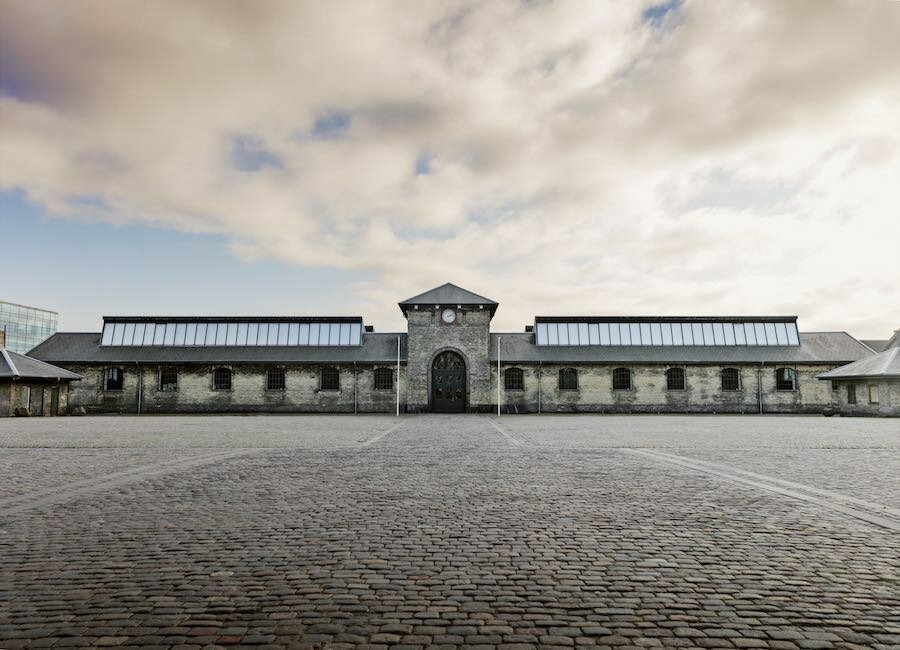IM INTERVIEW | MASER
MASER TALKING ABOUT NATURE, PATTERNS AND COLOUR.
Q: MASER, YOU ARE A STREET ARTIST. IS IT DIFFERENT FOR YOU TO WORK ONDOORS?
A: It’s a completely different context obviously. When you are outdoors, it’s more disposable. Due to the elements. You know, you can spend all day painting, turn around, go get your camera and come back and the wall is gone.
For me it’s nice to work indoors, because I feel I am bringing the outdoors inside and that gives it a different purpose. A different feel. In some way it gives me more stature. When you do all this free public art and paint murals people don’t regard it as much as if you painted it in a gallery where people go and see it. This is a weird thing. For me the contrast of building something big like that and bring the nature indoors is exciting.
Q: WHERE DID THE IDEA OF THE NATURE COME FROM?
A: Because of all my travel, city to city. I got some projects and works that stress me quite a lot. I then sort of forget where I am and what I am doing. But when I get back to Dublin or Milan and I go swimming in the sea or I go into nature… that moment of clarity comes back. This is a sort of reconnection with nature. I get it when I go to the mountains, for a walk with the dog. I find it very important to bring it back to stable. That’s why I did this thing. Because it’s important to me. We all get caught up in work every day. Bills, budgets, bullshit. So in some weird way, it’s healing for me to make that piece. It’s a therapy.
Q: DO YOU HAVE A FAVORITE SPACE OR TEXTURE TO WORK ON?
A: I am quite versatile. I painted for years, graffiti and street art. I always used the same tools. Today I am investigating and learning a lot. Using ribbon, building environments. I like to work with my hands and have my hands get dirty.
Q: WHEN DID YOU START INVESTIGATING?
A: About 3 years ago.
Q: DO YOU KNOW WHY?
A: It was just a natural progression. I realised that, me painting in the streets had an affected on the people. The public and their viewing. And how it changes their day to day, their landscape. Then I thought about that period and wondered how to communicate that?
I then literally, physically interrupted the landscape. I always had that graphic style, so I looked for different mediums to use, like tape and ribbon instead of painting. These allow me to interrupt that space more. That’s how it started. And then with woodwork and cutted wood I would make pieces more relief, more sculptural pieces and then just transcend it into these fucking huge pieces.
Over all, I use whatever medium it takes to communicate whatever I want to say. Wood, projection, video or music. There is no favourite one. It’s whatever it takes to communicate, communicate, communicate (laughs).
Q: WHAT IS THE MOST FUN PART OF YOUR WORK?
A: Meeting new people. It is the end goal when anyone interacts with the piece. For me there are three stages. Meeting people, having that relationship with the people, the collaborative element, meeting people like you. Then there is the finished piece. Seeing what was in my mind’s eyes and what’s now here in real life. We brought something into the world that wasn’t there before. And the third stage is purpose. Seeing its purpose. Just now, I have been traveling a lot and I love it. I get to alleviate my mind of these thoughts, being able to make these things up. It gives me a good purpose and I think a lot of people need that. You work, you try to find happiness every day but that’s just false. You will never find it. You need to find purpose in life and that will help you to have hope and to move forward everyday. That’s what motivates me anyway. If I would say „happy“, that would be too short. No, I think purpose is the most important thing.
Q: DO YOU PLAN EVERYTHING YOU DO? DO YOU SKETCH IT? OR DO YOU LET IT HAPPEN WHILE YOU ARE AT WORK?
A: A bit of both. If it was my way, I would just make it up as I do it. But cause I am doing collaborative and installation projects, I need to show final sketches. Here I am working with Sanna (project management PP, flora&faunavisions) She understands my process. When I say I want trees, she got me examples of smaller ones. I then do a quick drawing. Some measurements and then show the ribbon, we order enough and then we get there.
But you can’t plan it too much because you would miss the creative process. You need to be there and work with the space and see what it is. Because you could stand at a different angle and it wouldn’t look right. So that’s how I do it. If it’s a large painting piece, I design it all, that’s fine. But then, when it comes to painting I just order a lot of paint and put some yellow here and maybe blue there. I have to improvise. I have to enjoy it a little bit. That’s why I love just painting canvas, it’s exploring the space, considering and figuring out what is next.
Q: WHAT IS THE IDEA BEHIND THE INSTALATION YOU DID AT THE PHOTOGRAPHY PLAYGROUND?
A: The idea, as I mentioned it, stands for 15 years of work. Doing street art, looking at the space, interacting with public and going right back to nature. When I look at this piece it’s almost like a graffiti piece for me. It’s a three dimensional contemporary piece in a location. But it just happens to be a forest. I wanted it to look very visually interesting. It looks nice. It’s a tool for people to go investigating their space and understand where they are. And photograph it and see how they interact with it and save that memory with their photos. People should take ownership of it. I want the people to step inside. That’s the purpose. It is not just about me making the work. The public are just as important. They share the work on social media through their cameras. It’s a big collaboration.
Q: DO YOU LOOK FOR THE PICTURES OF THE PEOPLE ON SOCIAL MEDIA?
A: Yes, I google myself everyday! (laughs) I look at the hashtags. Some people add me on social media. But I need to get better. I don’t give it enough time.
Q: HAVE YOU SEEN THINGS YOU DID NOT EXPECT TO SEE?
A: Yes, so far yes. I saw some good ones. The light worked really well for some photos some people did. People are creative as well, doing low perspectives and high shots. They see it through different eyes. I am seeing it from my eyes, how I want it to look. And they see it in a fresh way.
Q: WHAT WOULD HAPPEN TO YOUR WORK IF EVERYTHING WOULD BE BLACK AND WHITE?
A: That would work, too. I have done some black and white works, like a black and white wall two years ago. That is good. But people have real emotional attachment to colour. And you would not ever realise. Like, if you go to work and someone comes in a really red jumper, that would trigger something in your mind. So colour is quite important. Yellow I find is probably the happiest colour there is. But then you put some contrast, put it next to a cold colour, like blue that emphasizes it. I think it is really important to have colour. I really use them as a good tool to evoke feelings of people. And I always get a good reaction.
Q: SO YOU ALWAYS TAKE MORE THAN 2-3 COLOURS?
A: I have got a colour pallet of eight colours I use. The same every time, same pantone colours. And black and white as well. Those are my colours. I do that and then I have 35 variables of it. That’s a system that I have. It is broken into 35 colour combinations for stripes. It’s always the same pattern. If you look at all my pieces, you will see I always do navy and yellow, and magenta and yellow… I have a system of what colours go with yellow, what colours go with baby blue, with mint… and that’s it.
Q: HOW DID YOU COME UP WITH THAT?
A: Because I am trying to think of this idea where it can become like a text book. I will then be able to hand it over to people. I have the idea of interacting with public. Maybe I can get to the stage where they can do the art themselves. I want to come up with a system where I give the text book, like a manual.
Right now I am working on patterns and making my own abstract typography, a sort of an alphabet of patterns.
Once I will have it figured out, you will be able to put certain patterns together. And once you have the key, you will see what the word says. If I can make that work, I will be able to communicate even more messages. It is halfway through, but it takes a long time. I studied typography, that’s my qualification.
Q: DO THE PHOTOS OF YOUR WORK EXPLAIN WHAT YOU WANT TO SAY WITH YOUR INSTALLATION?
A: They do and they don’t. You can take a photo of a sunset, or you can do a painting, but nothing beats seeing the sunset.
I photograph all my work. But I always find it more interesting when other people do. Because they get different shots. I can’t get the shots, because I’m thinking too much. Still it is really important for me to share the messages through photos. That’s how it works with the internet. I like people sharing my work.
Q: DO YOU PREFERE A VIDEO OR A PHOTO DOCUMENTATION OF YOUR WORK?
A: I probably prefer photos because it’s more controlled. But then it sometimes really works with video. But it has to be a good video. Cause they are so many bad ones.
Q: BUT THERE ARE ALSO A LOT OF BAD PHOTOS.
A: Yes. (laughs) I’ll take whatever it takes to share the piece in it’s capacity. Video or photo.
Maser, thank you very much!
Photos © Miguel Martinez




